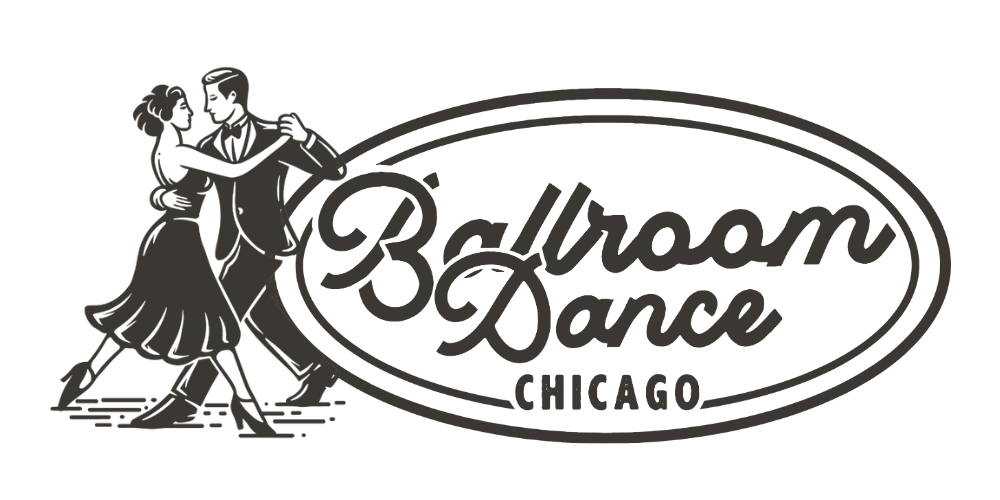BDC Credo: Preconceived Notions of Dancing
At Ballroom Dance Chicago, we’re constantly examining and exploring our roles as dancers, teachers, and inspired individuals in the lives of our students and the wider Chicago community. To deepen and expand our understanding of these roles, we’ve taken to individually writing and sharing our responses to some of the principles we’ve devised to guide Ballroom Dance Chicago.
What keeps people from wanting to learn to dance?
Matthew Sove:
The straightforward answer is that people simply haven’t had much experience with partner dancing. We’re not taught to dance and our culture only has a couple of moments that people are “forced” to dance (think senior prom and a wedding first dance). Add to that that we’re usually guided do things we’re good at, at least in our careers, so that the further along we get (or the older we get) the more we do things we know a lot about and the less we try entirely new things we may not be good at right away. That means that by the time a client walks through our door, they’re usually fairly far along in their careers and have dedicated a lot of time and energy to being right and knowing a lot. So it can be pretty intimidating to start at zero for people who haven’t been there since kindergarten.
Additionally, our schools value things like math and science over any other topic and these fields have right and wrong answers. Once you know how to get to the right answer, you’re done learning. So when you know the answer to 2+2, you don’t have to study 2+2 anymore. Some people can get it right away and some people need to work a little harder, but once you know the answer you’re done. With dancing, no matter how talented you are, you’ll have to work at it. Even if you’re the smartest person in the room, you’ll have to go through the process of incorporating the movement into your physical vocabulary. And when you finally do “get it,” someone will come along and give you even more details to learn that you didn’t know existed. 2+2 = 4, whereas learning to dance something like the waltz is an infinitely complex undertaking that takes countless hours to master.
Lydia Feuerhelm:
In addition to the usual trepidation that many people experience when faced with something they have no experience in, learning to dance is a special brand of terror. When asked to do something as personal as moving their bodies (especially in front of other people), a lot of people have experienced shame, embarrassment, or even outright criticism in the past for the way they dance. These negative memories have impact that can last a lifetime, hindering people from ever wanting to reach out, beyond their one or two bad experiences.
Now you might think that that’s a bit extreme. Some people don’t have this seemingly inborn distaste for having others witness them moving. Still, there are many ideas about the types of dance we teach that keeps people from attempting. As with any widespread activity, there are many stereotypes that exist of Ballroom, Latin, and partner dance. It might be seen as too rigid, formal, or exclusive. The assumption that these attitudes persist throughout the entire world of partner dancing is what keeps many people away.
What people don’t know, is that dancing is good for everyone, regardless of the type of dance or the degree of skill you possess. At Ballroom Dance Chicago, we attempt to rewrite the assumptions that people make about both themselves and the dance so that they can grow as individual dancers.
Cathy Gilpin:
In my experience, most people's understanding of ballroom dancing is how it is portrayed in the television show, “Dancing With The Stars.” For those of us dancing socially and teaching beginners, we know that this image conflicts with what it really means to learn to dance in a partnership.
When you think of ballroom dancing, there are probably a lot of images that come flooding in. In my own experience when I hear those words, I can still see images of tall, skinny men wearing tailcoats with a number pinned to their back, or a lean, tanned woman wearing a lot of make-up and a flashy dress. Another image that comes to mind is the grace and beauty of watching Fred Astaire and Ginger Rogers float around a dance floor. In other words, the thought can be pretty intimidating.
Beyond the way dancing is portrayed in the media, there are a lot of vulnerabilities involved in learning to dance. Learning to dance requires body and movement exploration. Anyone that made it through the public school system alive will attest that that kind of behavior was strongly discouraged. I believe that this discouragement of movement creates a lot of shame and embarrassment surrounding learning to dance, so it’s no wonder why people would feel hesitant to learn this skill.
